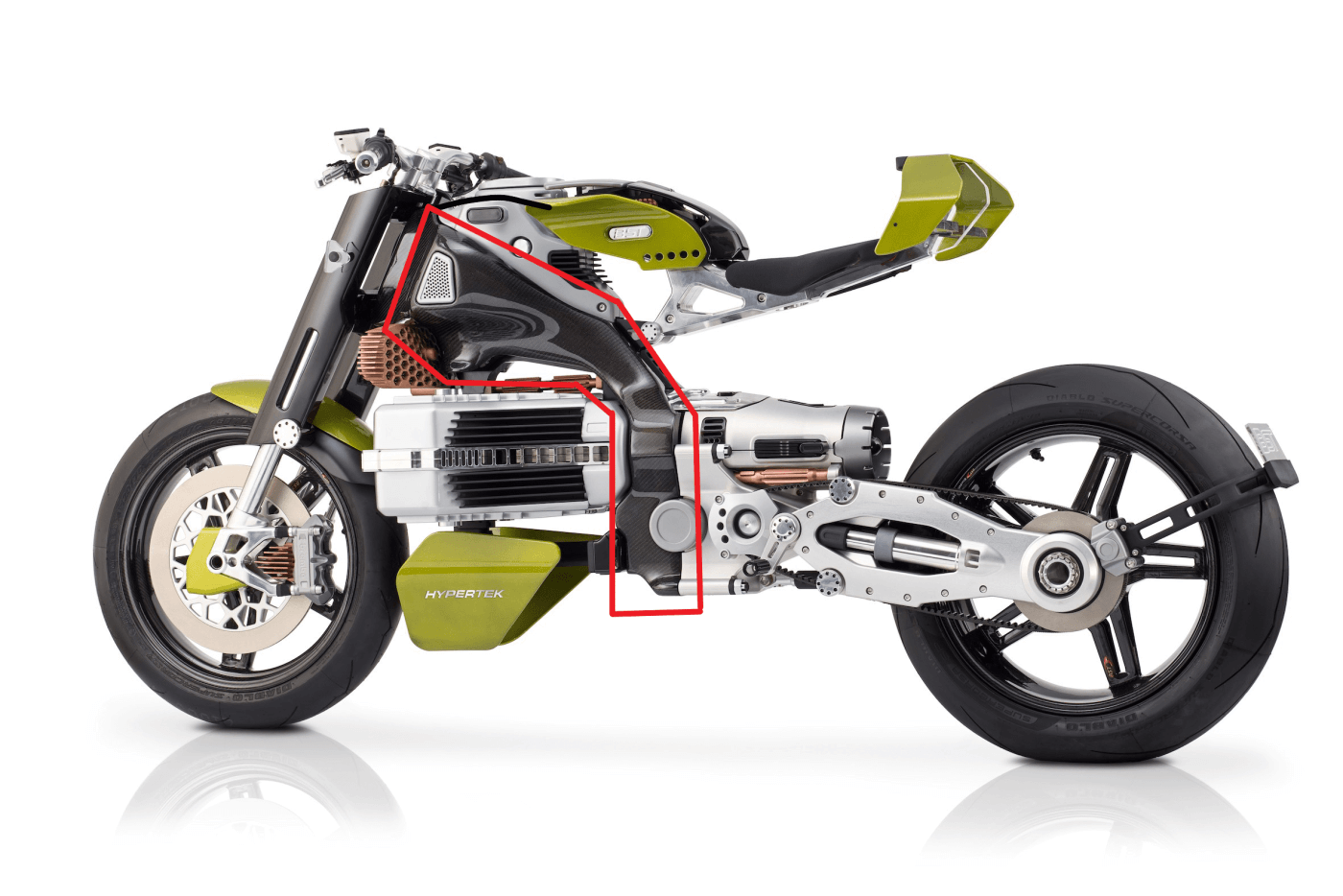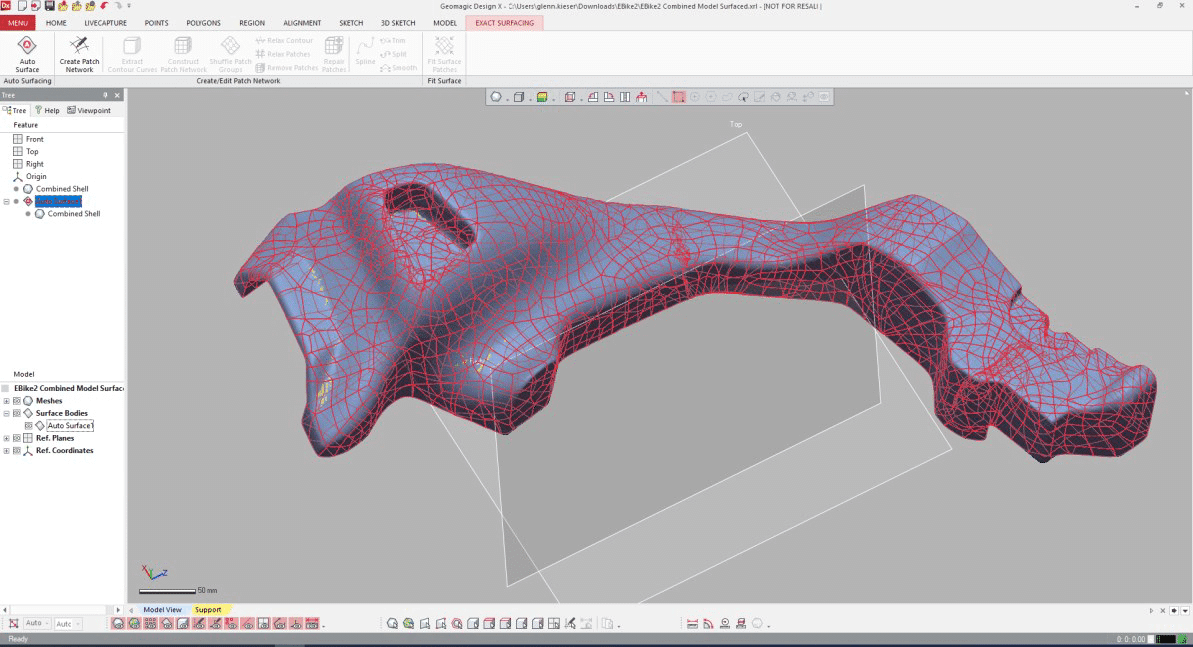Elevating electric motorcycle design with EviXscan 3D scanner and Geomagic Design X
A lot of manufacturing processes require a CAD model. If you’re creating one for an existing object, it’s much easier to work from a 3D scan than from scratch. In the world of 3D scanning, this approach is called a scan-to-CAD workflow, and it’s what enabled a renowned automotive manufacturer to swiftly transform a sleek prototype into a manufacturable model.
Blackstone Tek (BST) specialises in fabricating carbon fibre products for motorcycles. A love of racing drives the company to innovate and create cutting-edge parts that include super-light and strong wheels, fuel tanks, swingarms, fairings and custom components for iconic automotive brands.
A new addition to their range was an electric motorcycle, the HyperTek. This was the vision of Pierre Terblanche, a designer who has worked on world-famous vehicles such as the Ducati’s 999, the HyperMotard and the SuperMono.
When creating the prototype of this BST’s electric motorcycle, Terblanche used a combination of CAD modelling and hand-sculpting. The components with compound curves were hand modelled and needed to be converted into CAD models for fabrication.
 Parts of Blackstone Tek’s HyperTek were initially hand-modelled, and then digitized in Geomagic Design X.
Parts of Blackstone Tek’s HyperTek were initially hand-modelled, and then digitized in Geomagic Design X.
Enter 3DWORX. Headquartered in South Africa, 3DWORX offers services in the field of high-precision 3D scanning, CAD design, reverse engineering, and 3D printing. The company also distributes eviXscan 3D scanners in the sub-Saharan region.
After looking at Blackstone Tek’s project for the electric motorcycle, they decided the most efficient approach to digitizing the models would be a scan-to-CAD workflow. Their solution combined 3D scanning and reverse engineering. The team used an eviXscan 3D Heavy Duty Optima scanner, the eviXscan Suite 3D scanning software and Oqton’s Geomagic Design X to recreate the entire model in CAD.
Scan-to-CAD workflow
3D Heavy Duty Optima is a professional high-precision 3D scanner for reverse engineering, contactless quality control and fast prototyping of medium-sized models. In short, the right tool for this type of job.
3DWORX implemented a simple, four-step workflow which gave them a parametric CAD. Here’s how it all works:
Step 1: Scanning. The team scanned the side patterns with the eviXscan 3D Heavy Duty Optima structured blue-light to achieve the highest possible accuracy. Each pattern was sprayed with an extremely thin white contrast and had eviXscan markers attached for pre-alignment of multiple scans sets in the eviXscan 3D Suite software.
Step 2: Meshing. 3DWORX performed the next three steps in Geomagic Design X software for reverse engineering. They created a high-fidelity surface mesh, removed the markers, filled-in holes and edited the scan.
Step 3: Creating surfaces. Geometric surface features were extracted and generating form-following surfaces over the organic-shaped sections.
4. Exporting 3D parametric models. The team was able to export the geometries, topologies, modeling histories, and parameters and used them in any number of feature-based CAD systems such as Fusion 360, CATIA, PTC Creo, and SOLIDWORKS and more. 
A CAD model from a 3D scan in Geomagic Design X
The future of 3D scanning in automotive
The 3D scanning use cases for the automotive sector abound. Beyond new product development, you can use it to reverse engineer broken or worn parts, carry out quality inspection, to customize vehicles or do 3D visualizations for events.
We dive deeper into these applications in our guide Everything you need to know about 3D scanning for the automotive industry. Check it out!
Topics 
Subscribe to our newsletter
Get our best content straight in your inbox

